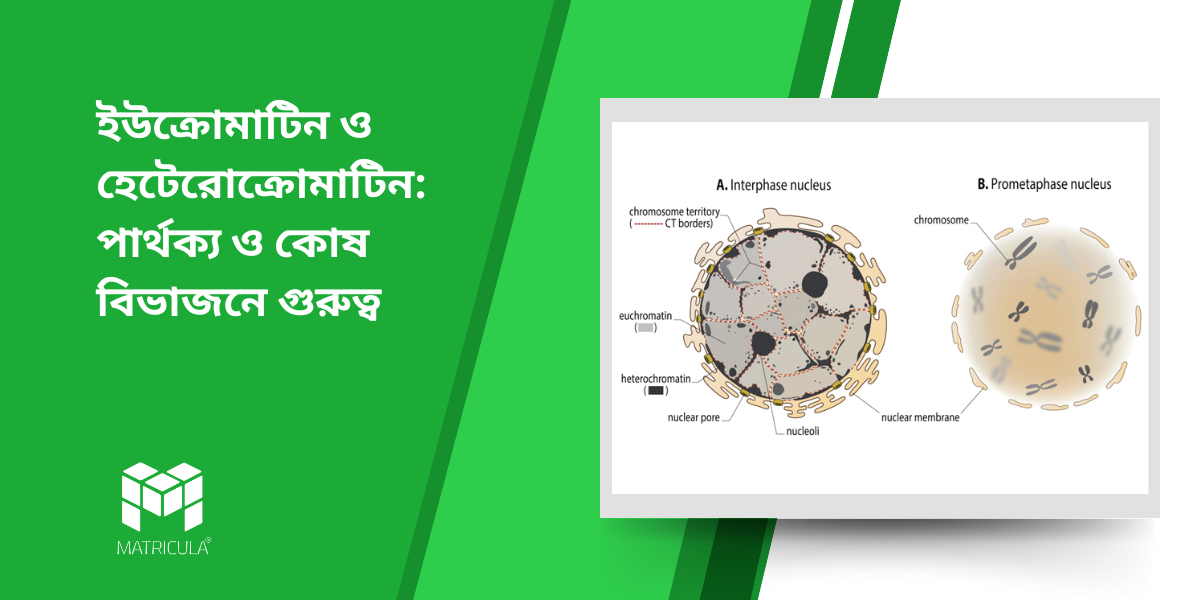Introduction
Cell division and the cell cycle are fundamental processes in all living organisms, ensuring growth, development, and reproduction. During these processes, chromatin—the complex of DNA and proteins within the nucleus—undergoes structural changes to facilitate gene expression and DNA replication. Chromatin exists in two distinct forms: euchromatinand heterochromatin. Understanding these two types is crucial to comprehending how genetic material is organized and regulated during the cell cycle.
What is Euchromatin?
Euchromatin is the loosely packedand transcriptionally activeform of chromatin. It is lightly stained under a microscope and is primarily found in the nucleus of eukaryotic cells. Euchromatin plays a vital role in gene expression as it contains actively transcribed genesthat produce proteins essential for cellular functions.
Characteristics of Euchromatin:
- Less condensed, allowing easy access to DNA for transcription.
- Contains genes that are frequently expressed.
- Stains lightly in microscopic observations.
- Found in both prokaryotic and eukaryotic cells.
- Active during interphase to support continuous gene activity.
What is Heterochromatin?
Heterochromatin is the highly condensedand transcriptionally inactiveform of chromatin. It appears as a darkly stained region in microscopic images due to its tightly packed DNA-protein structure. Heterochromatin mainly functions in maintaining chromosomal integrityand gene regulation, often silencing genes by preventing transcription machinery from accessing the DNA.
Characteristics of Heterochromatin:
- Densely packed, making it transcriptionally inactive.
- Contains repetitive DNA sequences with limited gene expression.
- Stains darkly under a microscope.
- Primarily found near the nuclear envelope and centromeres.
- Plays a role in genome stability and chromosomal organization.
Key Differences Between Euchromatin and Heterochromatin
| Feature | Euchromatin | Heterochromatin |
| Structure | Loosely packed | Densely packed |
| Gene Expression | Transcriptionally active | Transcriptionally inactive |
| Staining Property | Lightly stained | Darkly stained |
| Function | Active role in gene expression | Maintains chromosome structure and silences genes |
| Location | Found in both prokaryotic and eukaryotic cells | Mostly in eukaryotic cells near centromeres and telomeres |
| DNA Accessibility | Easily accessible for transcription | Inaccessible due to tight packing |
Significance of Euchromatin and Heterochromatin in the Cell Cycle
During the cell cycle, chromatin must alternate between relaxed and condensed states to ensure proper DNA replication and cell division:
- In Interphase: Euchromatin remains loosely packedto allow active transcription and gene expression necessary for cell growth.
- In Mitosis and Meiosis: Chromatin condensesto form chromosomes, with heterochromatin helping in chromosome stability and segregation.
Proper regulation of euchromatin and heterochromatin is essential to prevent genetic disorders, ensure accurate gene expression, and maintain chromosomal stabilityduring cell division.
Euchromatin and heterochromatin are two critical forms of chromatin that regulate gene activity and chromosome organization. While euchromatin ensures active transcriptionand protein synthesis, heterochromatin provides structural supportand gene silencing. Their balanced interaction is vital for genetic stability, cell function, and normal growth. Understanding these differences helps us grasp fundamental biological processes such as gene regulation, inheritance, and the impact of chromosomal abnormalities on human health.


